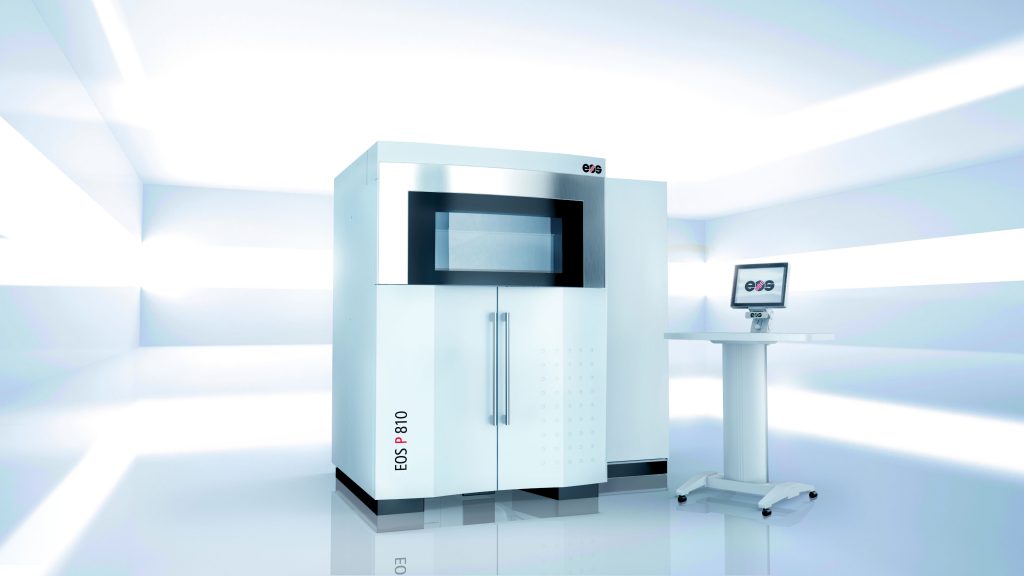Industrial 3D printer provider EOS has released the first high performance, carbon-fiber reinforced PEKK material suitable for use in its polymer systems. The high temperature HT-23 material has been developed in collaboration with leading aerospace company Boeing. It is suitable for use on a new EOS P 810 system that was also announced today at RAPID + TCT 2018.
“The aerospace industry has to meet challenging requirements when it comes to UV resistance, flame retardancy and meeting Federal Aviation Regulations (FAR),” emphasizes Scott Killian, aerospace business development manager at EOS North America. The material can be used to dramatically reduce the tooling costs, by replacing aluminum parts with plastic.
In addition, “Our EOS P 810 polymer 3D printing platform and the ALM HT-23 material enabled us to help Boeing reach high demands for weight reduction, cost efficiency and reduced assembly time for components.”

High performance polymers
Boeing competitor Airbus has had Stratasys’ PEKK-related ULTEM material installed as a standard in its A350 XWB aircraft since October 2016.
At Boeing PEKK 3D printing has previously been applied to the development of its CST-100 Starliner spacecraft in collaboration with Oxford Performance Materials (OPM).
The new, powder-based, HT-23 material released at RAPID + TCT is marketed by EOS wholly owned subsidiary Advanced Laser Materials (ALM). Carbon fiber content of the material gives components superior isotropic strength, and helps with the crucial advantage of lightweighting desired by manufacturers. The material also the first high performance material in ALM’s range with a low refresh rate of 40%, contributing to overall costs savings.
“Intensive testing of the final parts from the EOS P 810 proves the technology platform addresses Boeing’s needs and allows them to achieve homogenous part properties within the overall building volume, a key factor for cost efficient manufacturing of air ducts, small turbines and holders,” explains Killian.
In addition to aerospace, HT-23 resilience under wear and tear, chemical stresses and thermal/electrical pressures makes the material idea for use in white goods manufacturing, and transport.
Polymer 3D printer upgrade
The new EOS P 810 system is an upgrade of the company’s existing high temperature laser sintering P 800. The P 810 has a build volume of 700 x 380 x 380 mm. In place of the P 800’s dual 50 W lasers, the P 810 has two, more powerful, 70 W lasers that helps provide increased productivity.
A leading application for the new system and material is currently it’s positive contribution to industrial tooling applications.
Killian concludes, “Additive Manufacturing enables the design and manufacturing of complex geometries without expensive tooling. This allows aerospace OEM’s to replace composite parts which to date are being produced manually via carbon fiber laminating,”
“They can also replace aluminum parts with HT-23 while still meeting the material strength properties required for the application. With the EOS P 810, our customers can produce lightweight parts, reduce time for production and parts assembly, and cut overall costs-per-part.”
For more to-the-minute releases from RAPID + TCT 2018 follow 3D Printing Industry on Twitter, like us on Facebook, and subscribe to the our newsletter,
Cast your votes for technologies, materials and hardware of the yeat in the 2018 3D Printing Industry Awards now.
Find your next opportunity at 3D printing jobs and post a vacancy here.
Featured image shows the EOS P 800 additive manufacturing system. Image via EOS.


